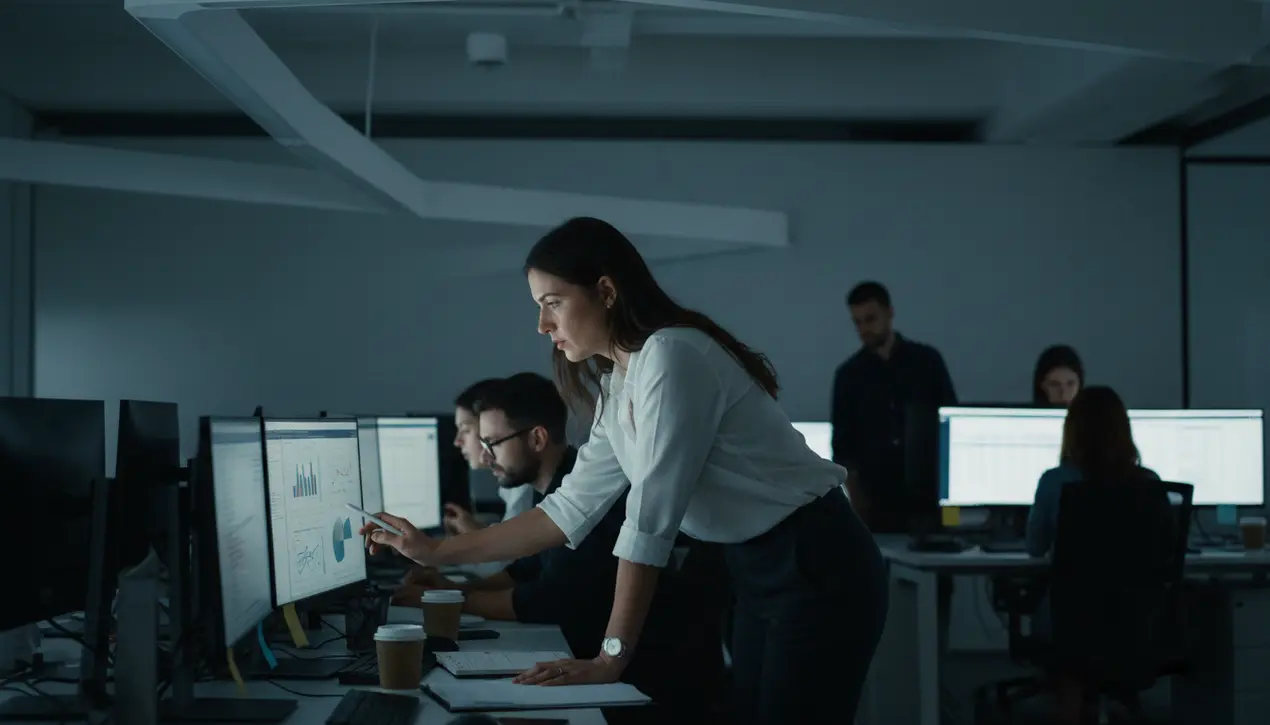
AIenterprise aiAI in Finance and Banking
AI isn’t just automating jobs. It’s creating new layers of human work.
DA
Daniel Reed
9 hours ago7 min read1 comments
The prevailing narrative that artificial intelligence is primarily a force for job automation is a profound oversimplification of its true impact on the modern workplace. As I've observed in my research, executives frequently tout their 'AI integration' strategies, yet most treat these systems as mere features bolted onto existing infrastructure rather than foundational transformations.This approach fundamentally misunderstands the emerging reality: every layer of automation conceals new forms of human labor and introduces unprecedented organizational risks. The historical pattern of technological implementation reveals this dynamic clearly—when enterprise resource planning systems promised end-to-end efficiency decades ago, they instead generated years of 'shadow work' as employees struggled with data mismatches and integration debugging.AI is now repeating this pattern at a higher cognitive level, creating what McKinsey recently termed 'the age of superagency,' where human workers spend less time performing tasks and more time overseeing increasingly intelligent systems. The paradox becomes increasingly evident: the more sophisticated our AI systems become, the more cognitive supervision they require to ensure they perform as intended.This supervision manifests in three critical forms that organizations rarely measure—verification work where humans check outputs for accuracy and compliance, correction work involving editing and sanitizing content before deployment, and interpretive work determining what AI-generated suggestions actually mean in practical contexts. Recent investigations reveal that more than half of workers already use AI tools secretly, often without managerial knowledge, while others share sensitive data with consumer-grade chatbots, creating compliance nightmares and data governance fractures.This underground AI usage creates more than just security risks—it fragments collective organizational learning as insights become trapped in personal chat histories rather than institutional knowledge bases. The ethical implications are equally significant, as we risk creating a new inequality where those who design AI systems receive recognition while those performing the invisible labor of maintaining their credibility remain overlooked.Even executives experimenting with AI 'digital clones' admit they don't fully trust their virtual counterparts, suggesting that trust remains stubbornly human despite technological advancement. The emerging solution requires treating AI access as shared infrastructure rather than personal tools, with governance principles including authorized intelligence systems with clear data residency, transparency by design where AI-assisted outputs are clearly labeled, and feedback mechanisms allowing employees to report errors and ethical concerns.We're witnessing the emergence of cognitive supervision as a critical human skill—the ability to guide, critique, and interpret machine reasoning without performing the work manually. This represents the corporate equivalent of managing teams whose internal processes we don't fully comprehend, requiring awareness of bias, logic, and automation limits that transcends simple prompt engineering. Organizations that succeed will be those investing in AI literacy as strategic infrastructure rather than merely deploying tools, recognizing that the most dangerous AI isn't what replaces people but what quietly depends on them without proper oversight, acknowledgment, or permission.
#AI automation
#hidden human labor
#enterprise governance
#data security
#cognitive supervision
#featured
Stay Informed. Act Smarter.
Get weekly highlights, major headlines, and expert insights — then put your knowledge to work in our live prediction markets.
Related News
Comments
Loading comments...
© 2025 Outpoll Service LTD. All rights reserved.